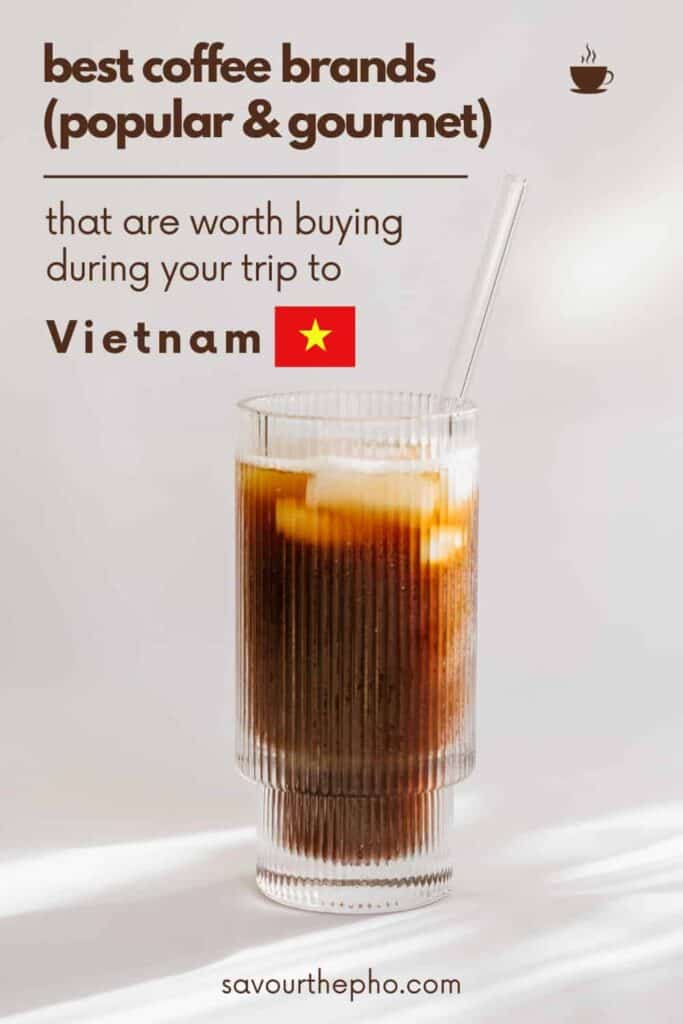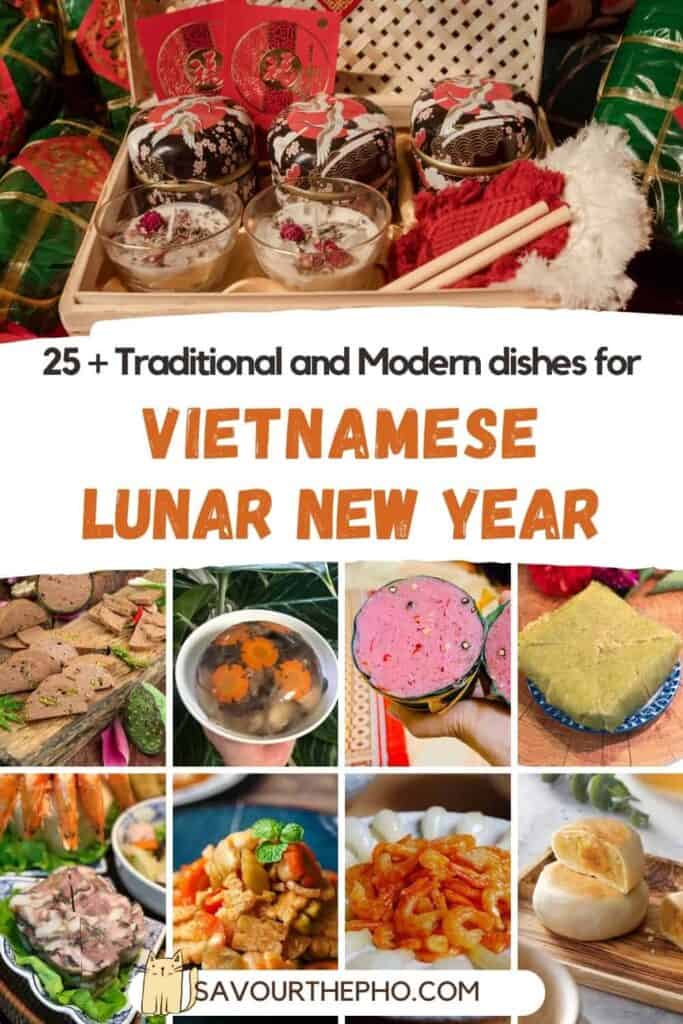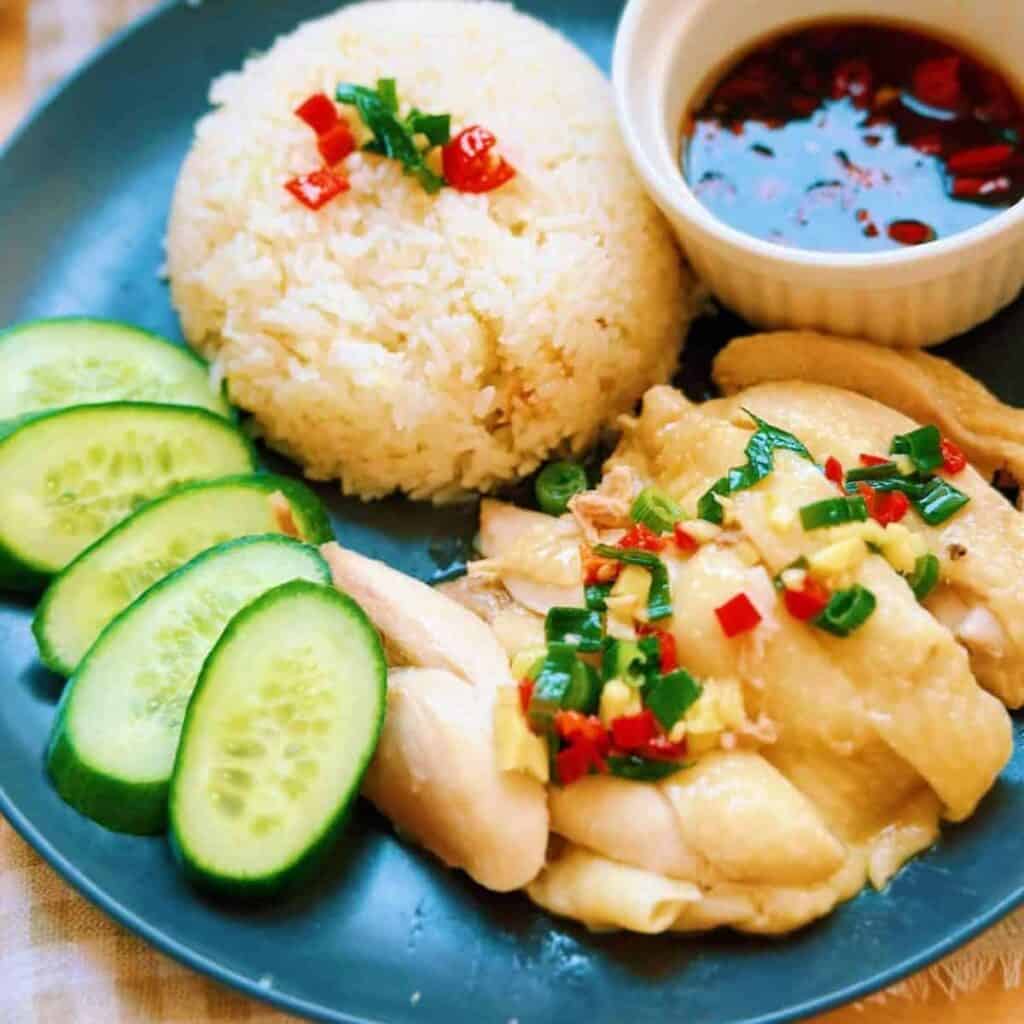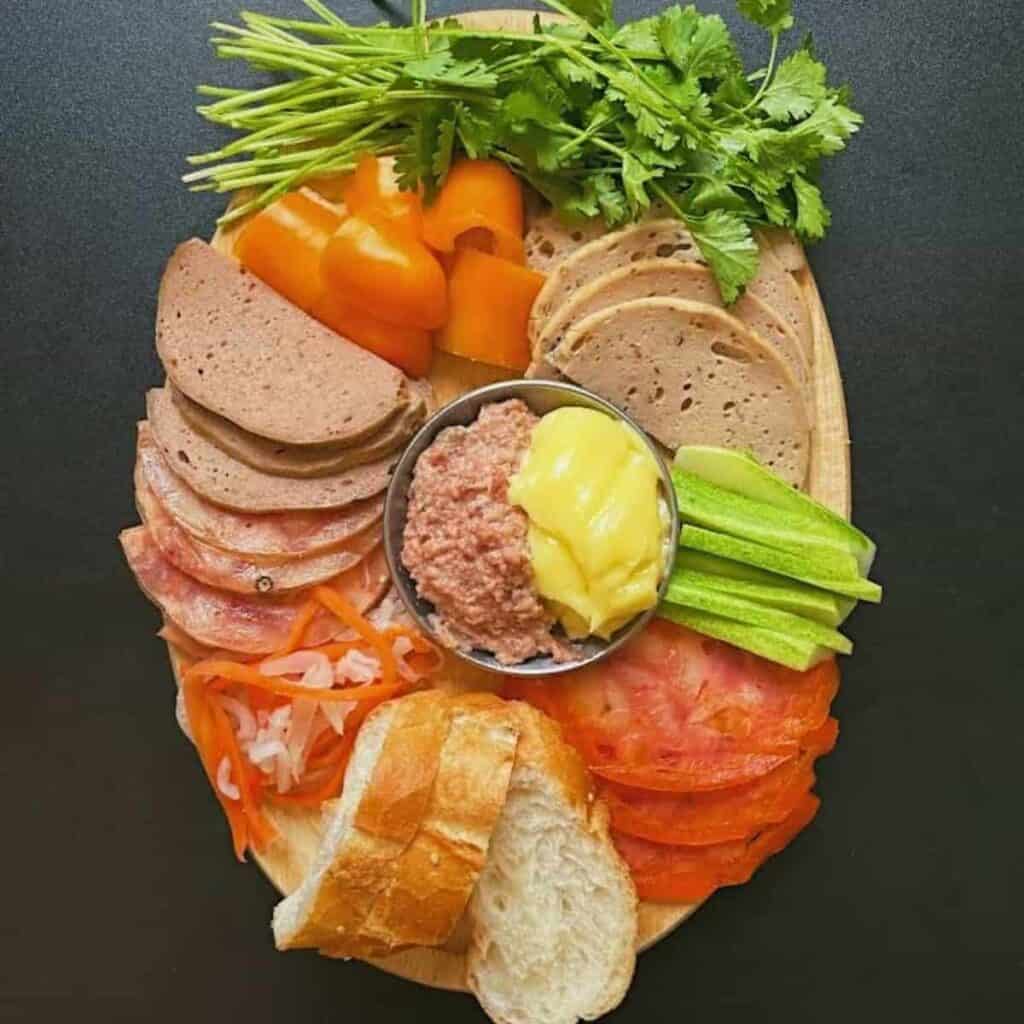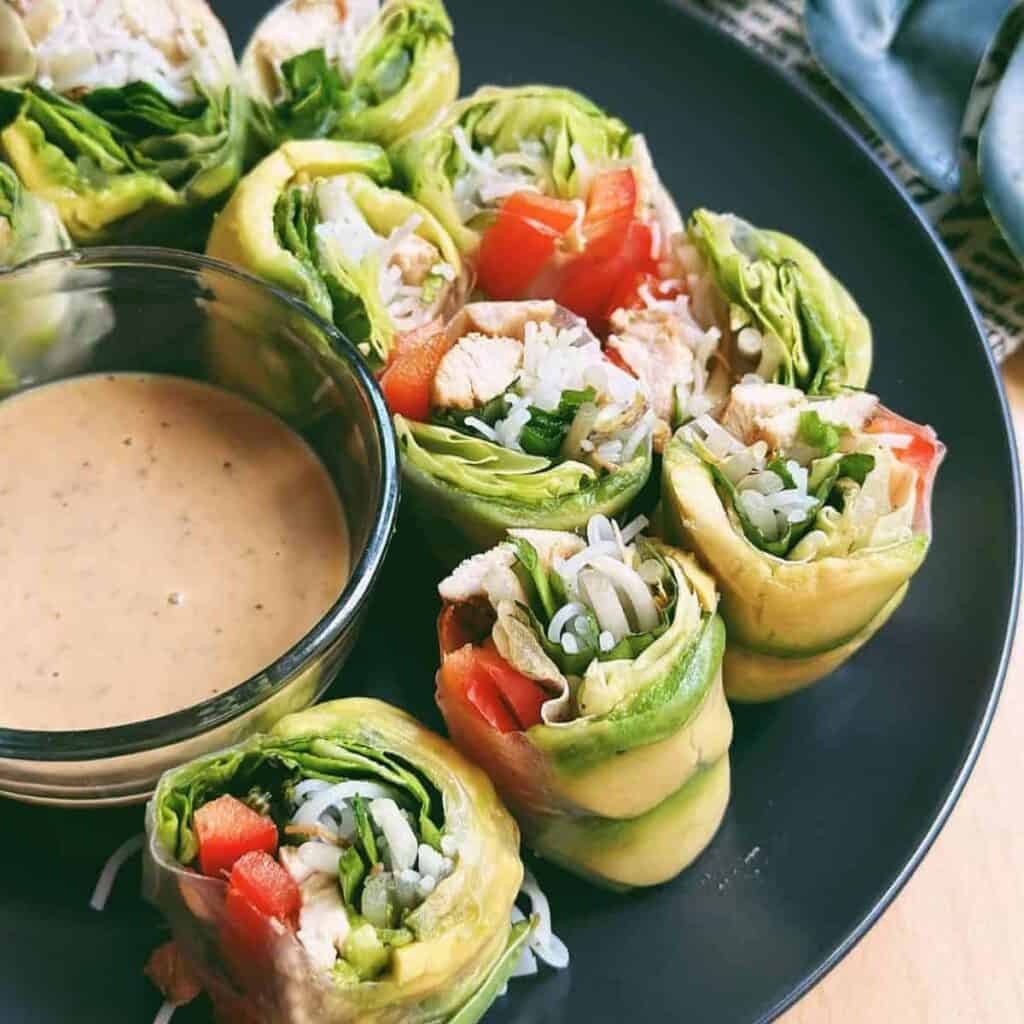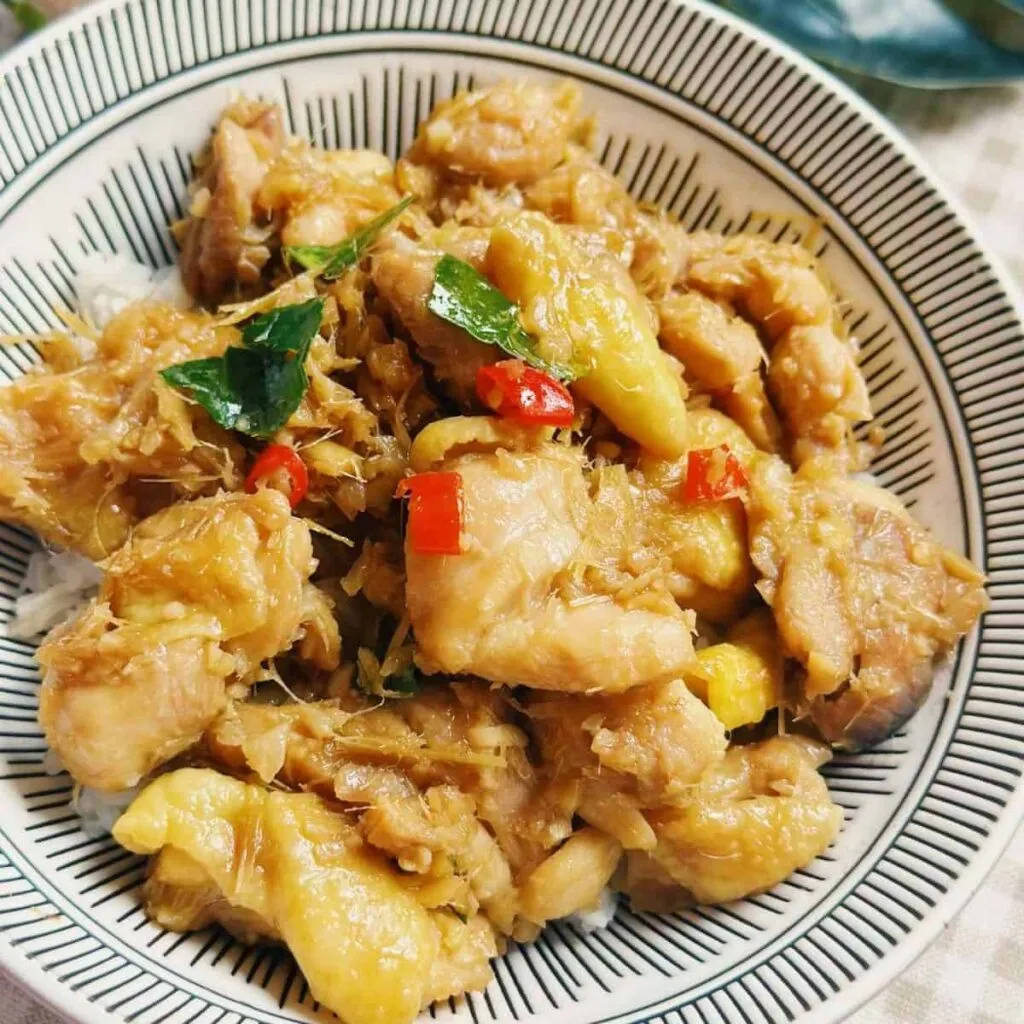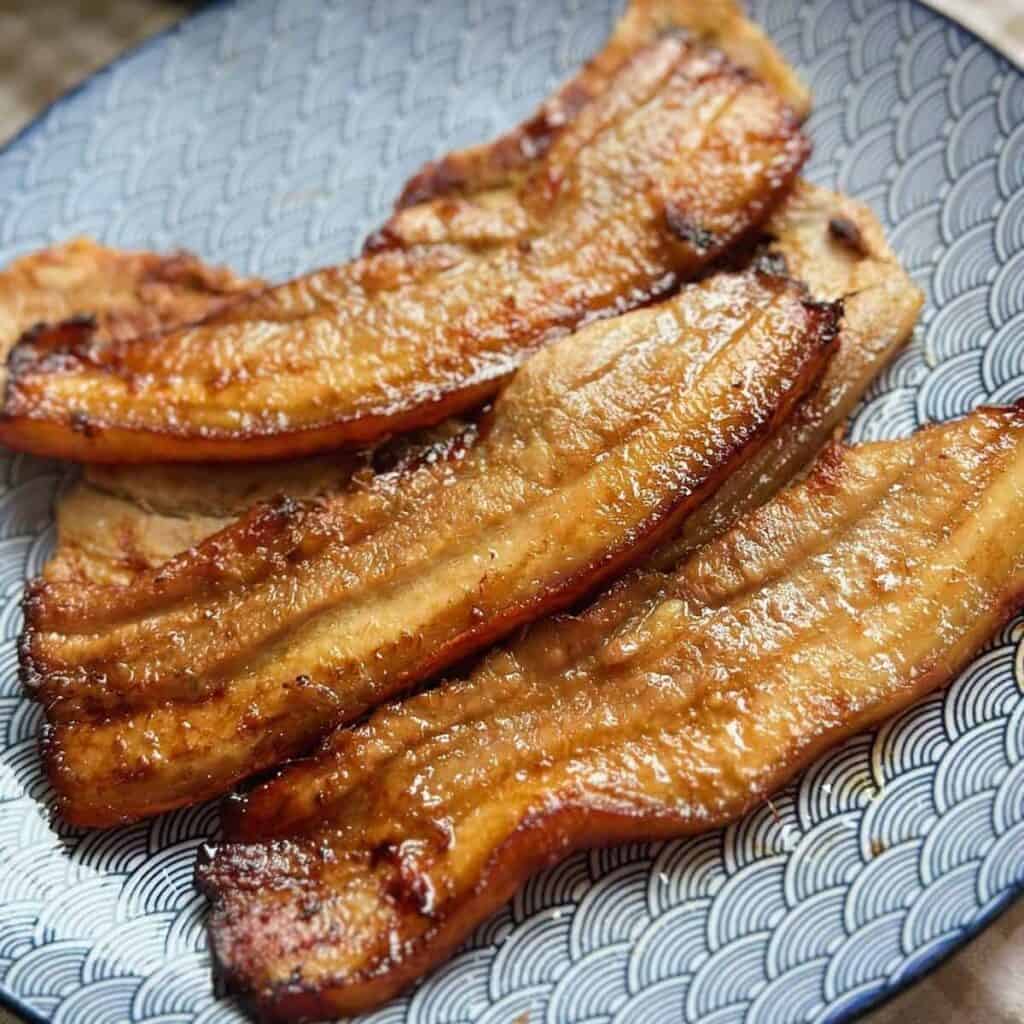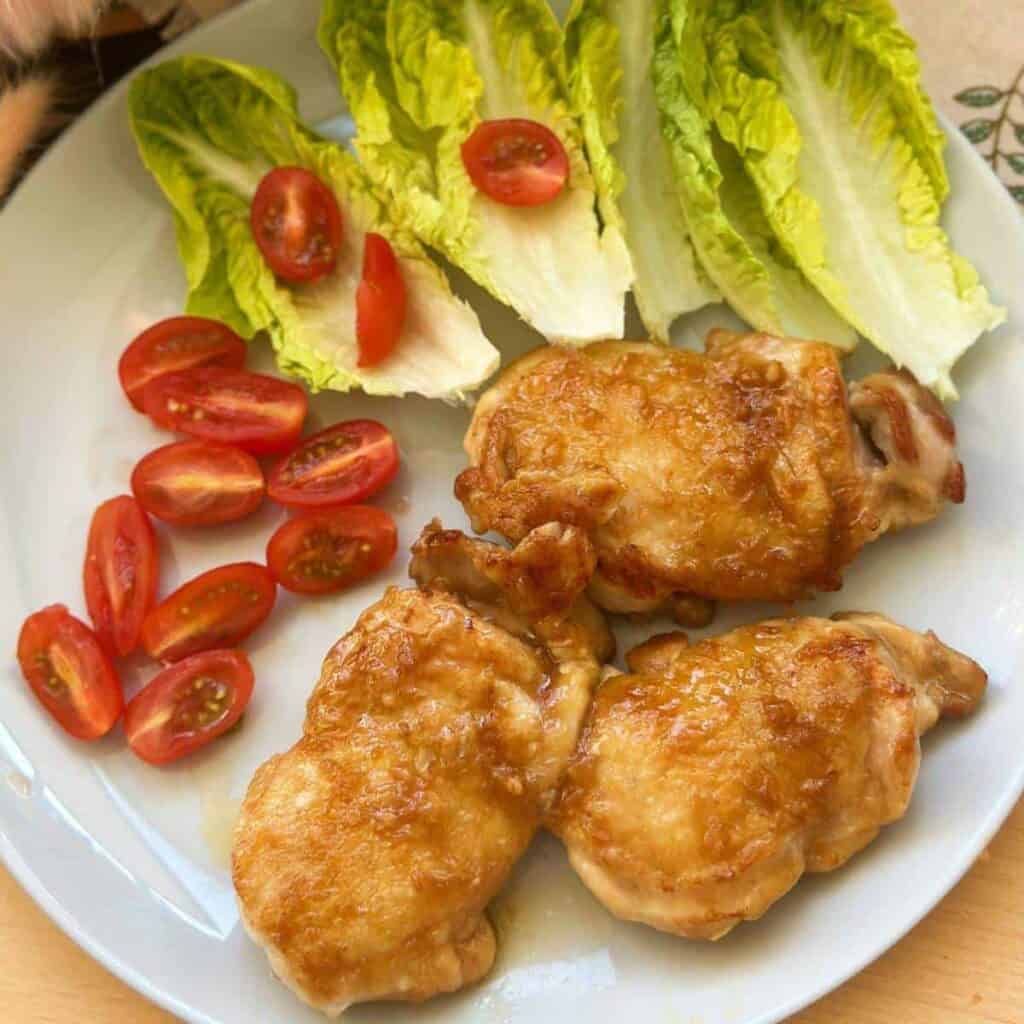Herbs and spices are like the heart and soul of Vietnamese cuisine.
From a rich bowl of Phở to crispy Bánh Xèo – what makes Vietnamese food truly special is the abundance of fresh aromatic herbs (rau thơm) and leafy veggies that come with it.

These herbs aren’t just about health perks – they also jazz up the flavors, aromas, and textures of the main dishes. But, if you’re new to Vietnamese cuisine , the variety of greens might throw you off a bit.
No worries, though! I’ve got your back with a friendly guide to the 30 most common herbs, complete with tips on how to make the most of them in Vietnamese cooking.
Most of the photos here are thanks to my mom – a gardening and home-cooking pro. Wrangling up all these Vietnamese herbs in Germany can be a bit tricky, so my mom back in Vietnam is my superhero.
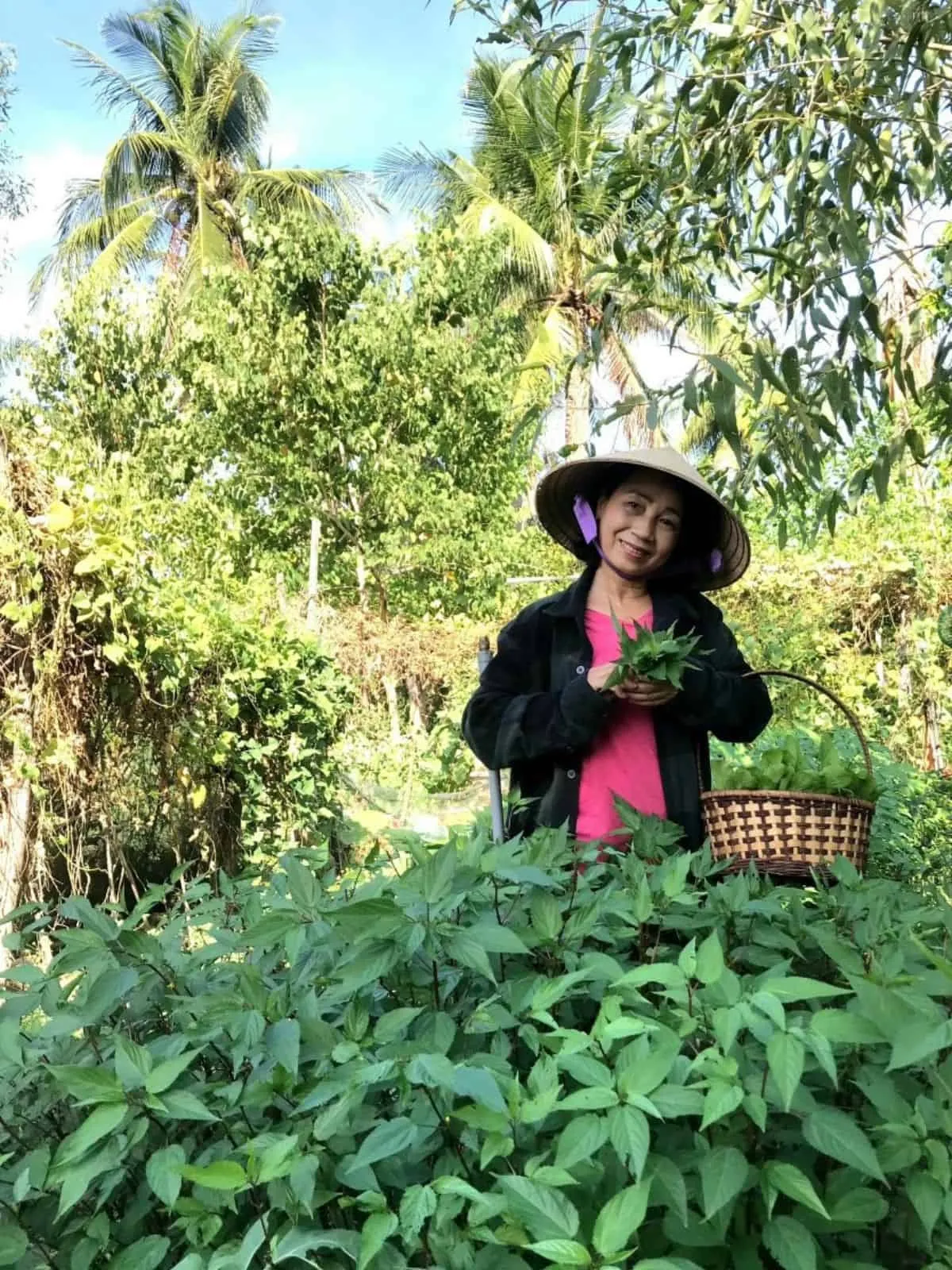
Back in the day, before ‘Western modern medicine’ arrived in my country, fresh herbs were the go-to for everyday ailments such as colds, stomachaches, or indigestion.
We often made them into medicinal remedies or turned them into comforting dishes for a speedy recovery, like Cháo Gà (Vietnamese Chicken Congee).
While the majority of the “rau thơm” I’ve covered in my post are common throughout the country, a few are specialties in some local regions.
Keen to delve deeper into Vietnamese cuisine?
Check out Beyond the Pho !! (with insights from a native-born Vietnamese). Some highlights:


1. Hành Lá (Green Onion/Scallion)

Green onions (hành lá) in Vietnam are sleeker with tinier bulbs compared to the one in Western countries.
When enjoyed raw, green onions (chopped or thinly sliced) are mostly used as a garnish for soup and stew dishes.
When being cooked, Vietnamese loves to make green onion into scallion oil (Mỡ Hành). This condiment is very popular in the Southern cuisine like in:

- Cơm Tấm: the broken rice platter.
- Xôi Mặn: the steamed sticky rice with various of savory toppings.
- Bún Gà Nướng: a rice vermicelli salad bowl with lemongrass chicken.
While the green part is more for garnishing, the white part is often used as an aromatic ingredient. People use it to marinate or sauté in cooking oil to create a flavorful fragrance to the food.
Recipes with scallions:
2. Ngò Rí (Cilantro/Coriander)
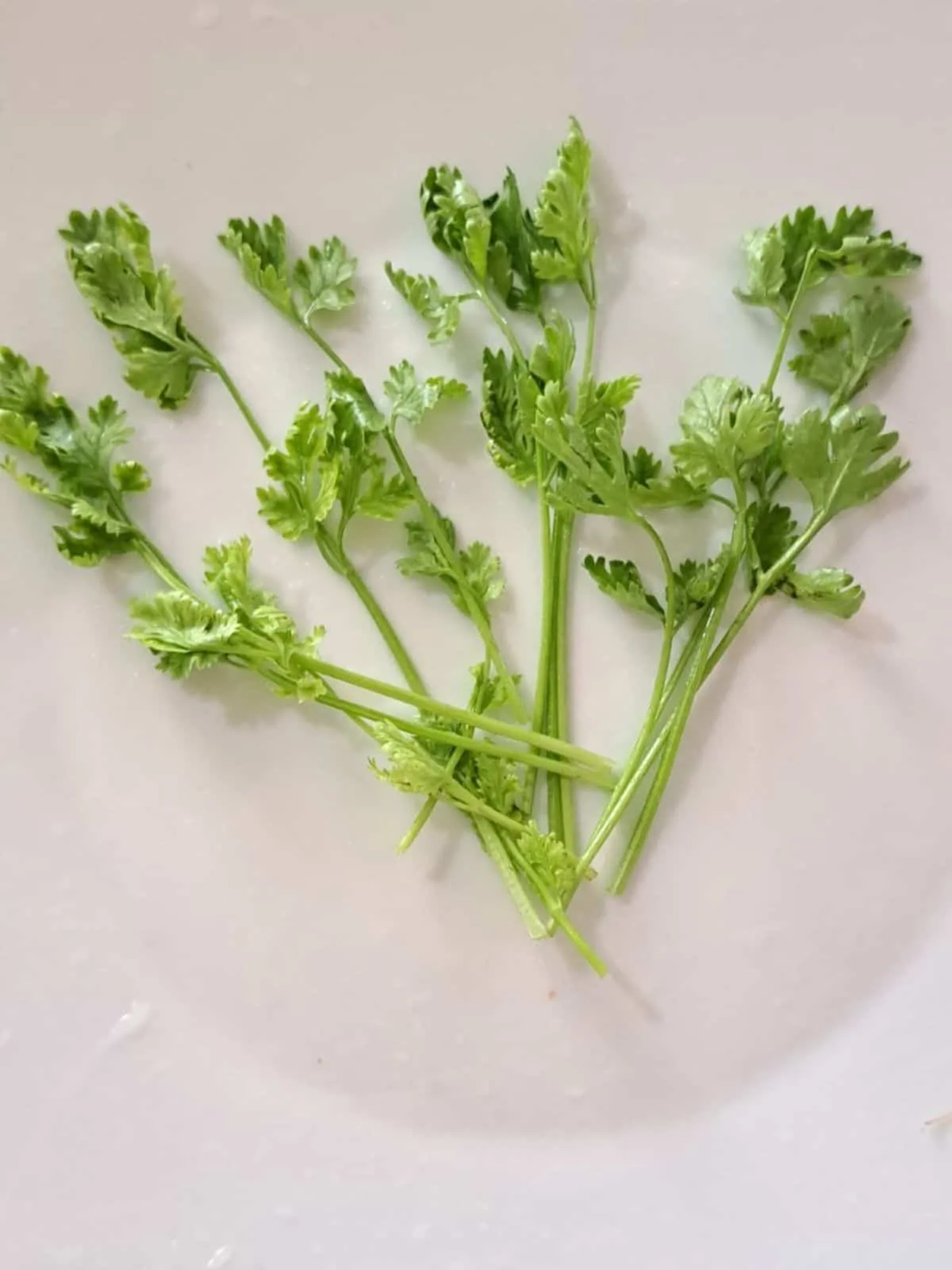
Coriander is the second most popular “rau thơm” in Vietnamese cuisine, right after hành lá. If you’re in North America, chances are you know it as cilantro.
Down in Vietnam, it’s Ngò Rí in the South and Mùi Ta in the North.
Vietnamese people often chop cilantro (together with green onions) to sprinkle on a piping bowl of soup (like Bún Mọc or Súp Măng Cua) or rice congee (like Pork Congee).
Cilantro/coriander is usually used fresh, whether as a garnish or mixed into a salad to jazz up the flavors and colors.
Recipes with cilantro:
Southern cilantro has bigger leaves and longer stems compared to the northern one but the northern cilantro brings a more potent fragrance. It’s the secret ingredient for the traditional filling of Nem Rán (Hanoi fried spring rolls).
Although cilantro leaves and stems are commonly used for garnishing, the seeds and roots are popular for marinating and cooking broth.
Cilantro seeds are essential spices for Chicken Phở, while the roots are a tip from Hanoi food vendors to enhance the chicken phở broth.
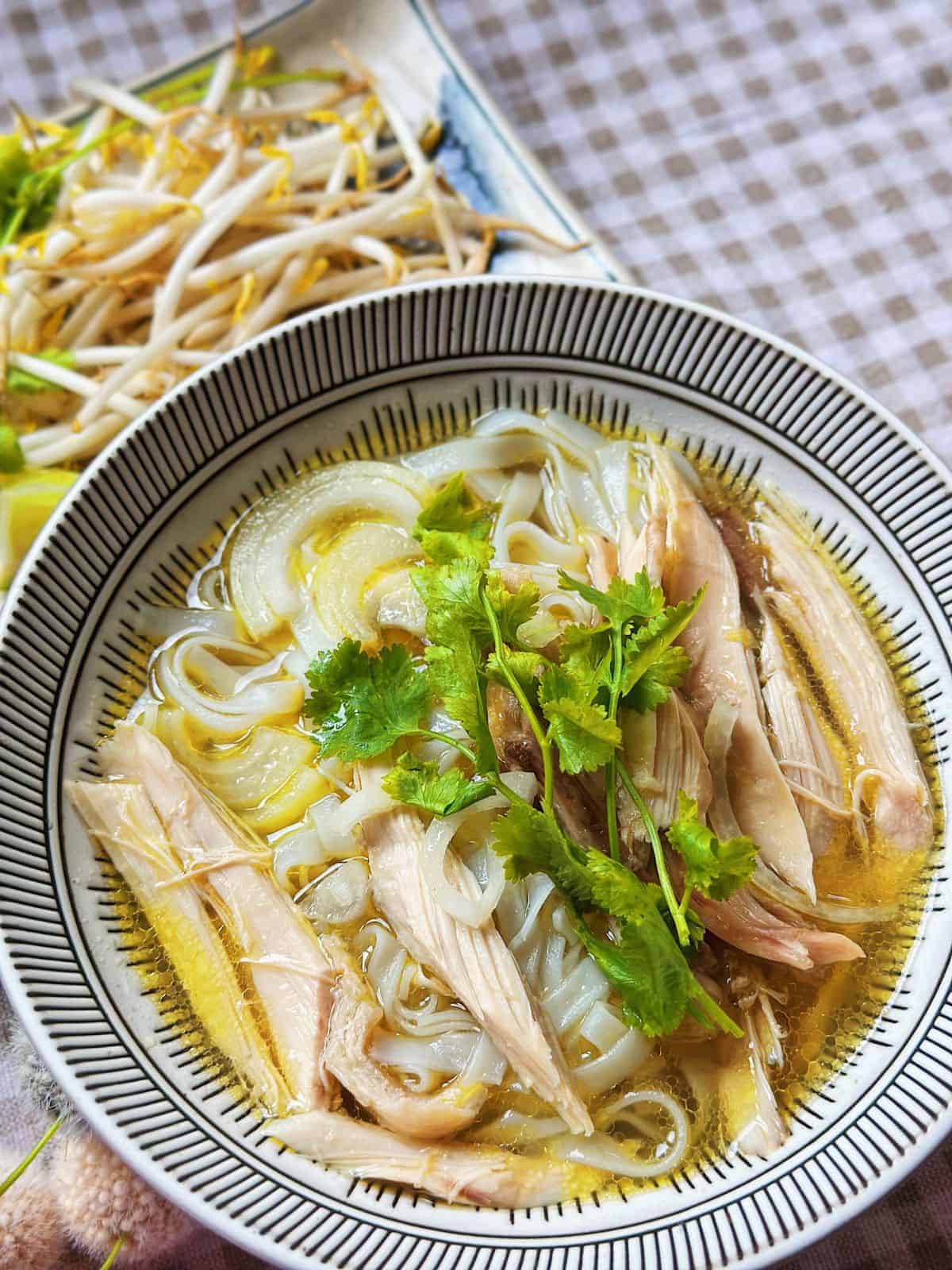
In Thai cuisine, cilantro seeds and roots are even more popular. They take the spotlight in many dishes such as:
- Gai Yang: Thai BBQ Chicken
- Nam Jim Jaew: Thai BBQ Dipping Sauce
3. Hẹ (Garlic Chives)

Garlic chives (hẹ) boast a robust, garlicky flavor, as the name suggests. They are often used as a vegetable in stir-fries or soups, and also serve as a fresh herb.
In the central region, chives are thinner but have a stronger fragrance. Local people often use them as a substitute for “hành lá” (green onions), either as a garnish or to make chive oil.
Recipes with Garlic Chives:
- Gỏi Cuốn: Vietnamese Spring Rolls, usually served with peanut sauce.
- Rice Paper Har Gow: the crystal shrimp dumplings with a rice paper twist.
4. Thì Là (Dill)

Dill (thì là) is a must-have in the renowned Hanoi dish, chả cá Lã Vọng (turmeric fish with dill). It’s a beloved ingredient in Northern cuisine, particularly in fish dishes like fried fish cakes (chả cá) and fish noodle soup (bún cá).
Dill doesn’t get the same love in the South. Back in my childhood, I wasn’t a fan of dill in mom’s dill fish soup (canh cá thìa là). It took growing up for me to truly appreciate its flavor.
5. Ngò Gai (Culantro/Sawtooth Herb)

Culantro/Sawtooth herb is recognized for its long, sharply-serrated leaves, resembling a saw blade, which earns it the name “sawtooth herb.” It is referred to as Ngò Gai in the south and Mùi Tầu in the north.
Culantro is often described as having a flavor similar to cilantro, but with a much stronger punch.
Ngò Gai often features on the plate of herbs for Phở in the South. Besides, it’s also served with Bò Kho (Vietnamese beef stew).
When I was still in Vietnam, ngò gai was an irreplaceable herb for seasoning Canh Chua (sour & sweet soup) and Canh Bí Đỏ (pumpkin soup).
6. Ngò Om (Rice Paddy Herb)

Rice Paddy herb (ngò om/rau ngổ) has a light citrus lemon flavor with earthy cumin undertones.
In Vietnam, rice paddy herb and culantro are close companions. They are often used together for garnishing Phở and Canh (Vietnamese light soup), such as Canh Khoai Mỡ (purple yam soup) and Canh Chua.
7. Tía Tô (Perilla Leaves)
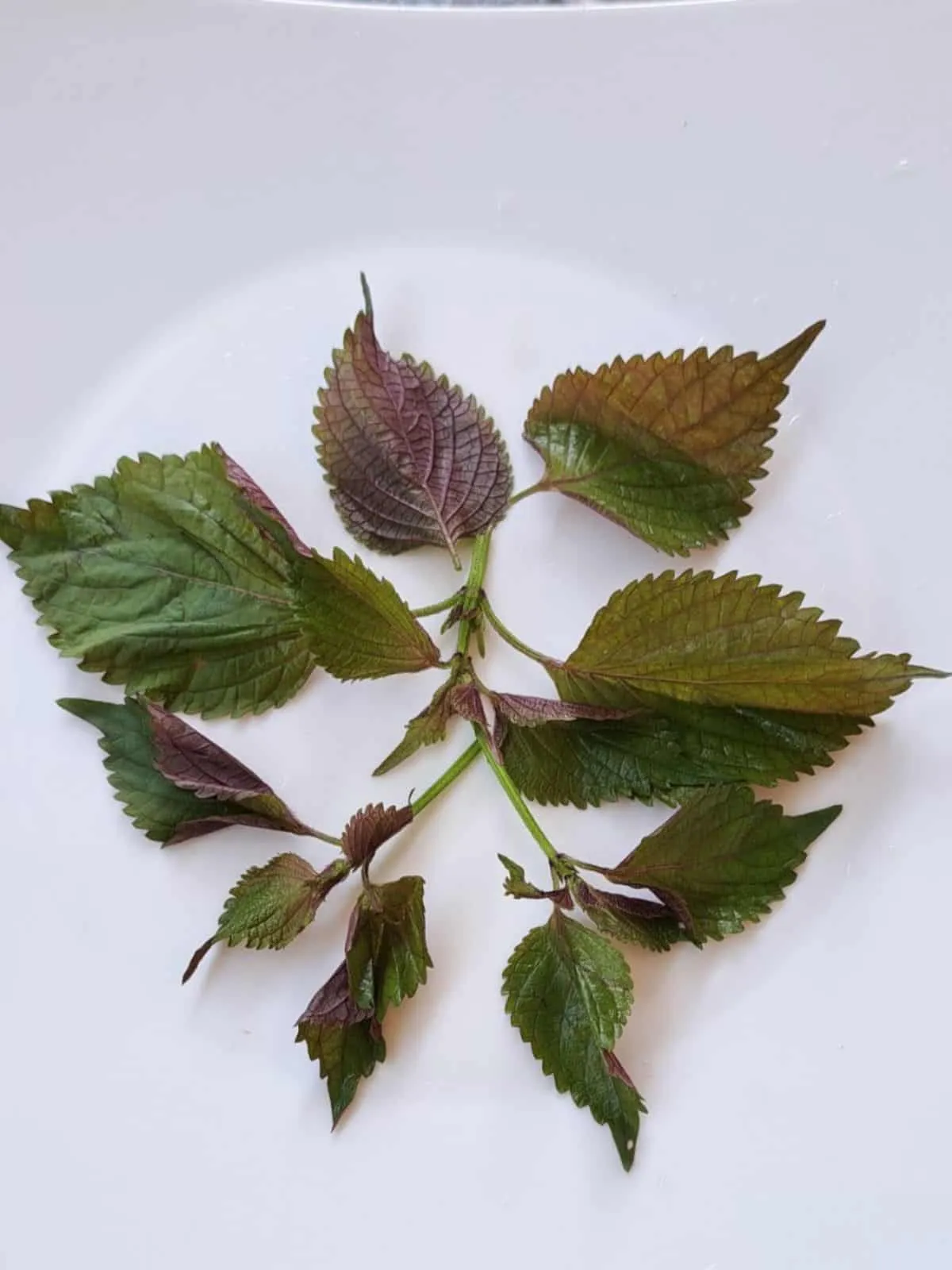
Perilla Leaf (tía tô), green onion (hành lá), black pepper (tiêu), and congee (cháo) make up a comforting combo for any Vietnamese when they’re feeling sick, a tried-and-true remedy for a cold.
Tiá Tô can be used as a cooking ingredient or eaten raw as part of a “rau sống” platter for many greasy deep-fried dishes like Bánh Xèo, Bánh Khọt, and Bánh Tôm Chiên.
8. Kinh Giới (Vietnamese Balm/Cockscomb Mint)

Rau kinh giới is a well-loved herb in Northern cuisine. This herb boasts a vibrant, warm lemon flavor with a subtle hint of mint, and a touch of spiciness.
You’ll often find it in many Northern dishes like:
- Bún Đậu Mắm Tôm: rice noodles with fried tofu and mắm tôm shrimp paste. It’s not for the faint-hearted.
- Bánh Cuốn: these Vietnamese steamed rice rolls in the North are served with Chả Quế (cinnamon sausages) and a bunch of herbs like Vietnamese balm, perilla leaves, and dill.
- Bún Chả Hà Nội: rice noodles with BBQ pork and fish sauce broth.
9. Rau Răm (Vietnamese Coriander/Vietnamese Mint)

Vietnamese Coriander/Vietnamese Mint (rau răm) is also known as Vietnamese Cilantro or Laksa Leaf. It presents a herbal, grassy, and green flavor infused with spice nuance and a peppery, zingy aftertaste.
In Vietnam, when mentioning rau răm, many people immediately think of hột vịt lộn (fertilized duck egg or Balut).
Yin-yang balance holds great significance in Vietnamese cuisine. Since ancient times, hột vịt lộn is classified as a cold dish with a ‘yin’ element, while rau răm is seen as an ingredient with a hot or ‘yang’ element. This is why they make a perfect culinary couple.
I love rau răm in Gỏi Gà (Vietnamese chicken salad), Bún Bò Huế as well as its vegan version, Bún Bò Huế Chay.
10. Diếp Cá (Fish Mint)

Diếp cá poses a challenge not just for foreigners but also for many Vietnamese (quite a few of my Vietnamese friends aren’t fans of rau diếp cá).
It has a slightly sour, metallic tang, often described as ‘fishy’ by the Vietnamese. Diếp cá is also a popular member of the “rau sống” platter.
Despite its divisive taste, for many Vietnamese, diếp cá is more than just a culinary choice. A lot of Vietnamese folks would daily drink fish mint’s juice for its potential health benefits.
11. Húng Quế (Thai Basil)

Thai basil (húng quế) is one of my most favorite Asian herbs. I’m a fan of its robust aroma, reminiscent of anise with a hint of mint.
Thai basil and mung bean sprouts are essential accompaniments for Southern Phở. You will never find them served with Northern Phở in Hanoi.
I love Thai basil in Bò Bía (Chinese sausage spring rolls) and many Southern rice noodle salads such as Bún Thịt Nướng, Bún Bò Xào, or Bún Chả Giò.
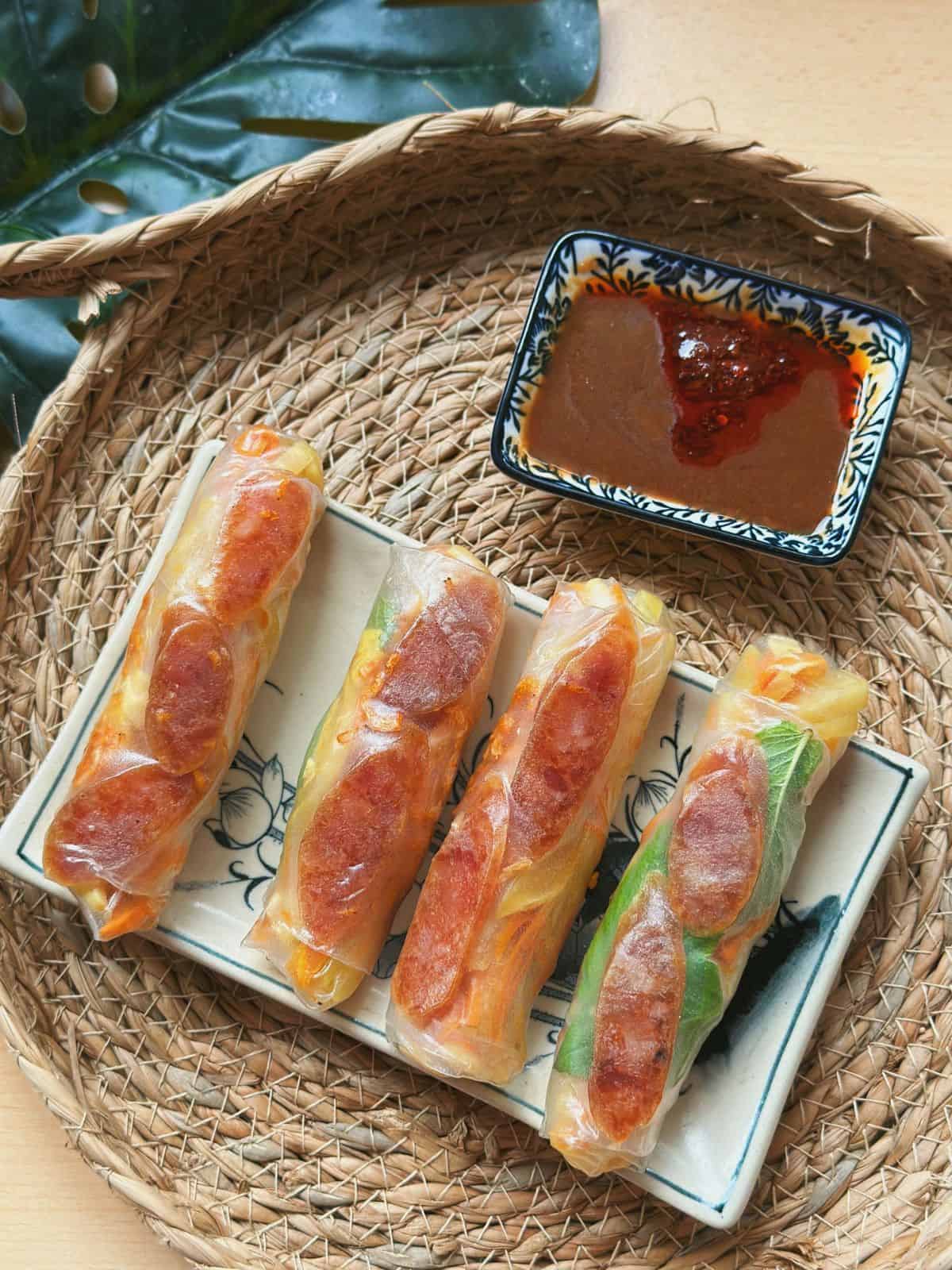
Thai basil is a common ingredient in Asian cooking too. Taiwanese popcorn chicken and Thai basil fried rice are always AMAZING!!
Thai basil shines brightly in Thai dishes (well, its name does say Thai Basil). It’s a crucial element in green curry paste.
Other times, I simply adore incorporating these fragrant leaves into stir-fries like Pad Ped Gai (Thai stir-fried chicken with red curry).
12. Húng Láng (Láng Basil)

Húng Láng is the speciality basil from Láng village near Hanoi. This herb could be found in many Hanoi specialties like phở (Hanoi locals prefer it over Thai basil for phở), bún chả and bánh cuốn.
Láng Basil leaves are smaller than Thai basil leaves and have a more delicate flavor. However, finding it beyond Vietnam, and even outside Hanoi, is a quest in itself!
13. Hương Nhu (Holy Basil)

Compare to Thai basil, holy basil (hương nhu) is more pungent with notes of licorice. In Vietnam, holy basil is more used as a medical remedy rather than as a cooking ingredient.
In Thai cuisine, holy basil is the signature ingredient in Pad Kra Pow, which literally means stir-fried holy basil. Outside of Southeast Asia, it’s quite challenging to get holy basil, so you could substitute it with Thai basil or Italian basil.
14. Húng Lủi (Spearmint) & Húng Cây (Peppermint)


These two mint varieties aren’t too distinct from each other, and you can easily swap them in recipes.
In Western cuisine, mint leaves are often used for decorating drinks or desserts. However, in Vietnamese cuisine, they add their refreshing touch to savory dishes.
They are must-haves for Mì Quảng (Quảng yellow noodles) and Cao Lầu (thick noodles with 5-spice braised pork) in Da Nang and Hoi An ancient town.
They are easily found in German supermarkets so I occasionally substitute them with less accessible Vietnamese herbs when making spring rolls or Vietnamese salads (Gỏi).
15. Húng Chanh (Mexican Mint)

Known by various names in English such as Mexican Mint, Indian Borage, French Thyme, Cuban Oregano, or Spanish Thyme, this herb goes by “húng chanh” or “tần dày lá” in Vietnam. It boasts a flavor profile reminiscent of thyme and oregano.
In Vietnamese cuisine, húng chanh is commonly found in soups (canh rau), “rau sống” platter and stir-fries.
16. Lá Lốt (Wild Betel Leaves/Piper Lolot Leaves)

The wild betel leaves (lá lốt) are heart-shaped and glossy green, featuring a noticeable crease along the mid-rib and a wrinkled appearance due to prominent veins.
They are known for their unique fragrance and are often incorporated into Vietnamese stir-fries.
The iconic dish featuring these leaves is bò nướng lá lốt (grilled beef wrapped in wild betel leaf), which is a popular street food in the southern regions.
17. Rau Khúc (Cudweeds)

Cudweeds (rau khúc) are a genus of flowering plants. Vietnamese people often use them to make bánh khúc / xôi khúc (“Khúc” Sticky Rice).
It’s kind of challenging to get fresh “rau khúc” abroad, but sometimes you could find powdered “rau khúc” in Asian supermarkets. Many Vietnamese housewives abroad substitute them with kale leaves, kohrabi leaves or spinach.
18. Rau Đắng (Common Knotgrass)

Rau đắng, literally translated to Vietnamese as “bitter leaves,” has a slightly bitter flavor and is very popular in fish congee (cháo cá rau đắng) as well as when eaten with hot pot.
In my hometown of Nha Trang, people love to pair rau đắng with central-style bánh xèo (the savory pancakes in the central region have no coconut milk and often have seafood as fillings).
19. Ngải Cứu (Mugwort)

Mugwort (ngải cứu) is another beloved herb in Northern cuisine, known for its spicy and slightly bitter taste.
Northern people often pair mugwort with eggs or chicken, creating dishes like trứng rán ngải cứu (Vietnamese omelette with mugwort) or gà hầm ngải cứu (chicken slow-cooked with mugwort).
20. Sả (Lemongrass)

While lemongrass (sả) is not commonly served raw as part of a “rau sống” platter, it is a widely popular ingredient in Vietnamese cuisine as well as in Southeast Asian cuisines.
Lemongrass has a delightful citrusy aroma and a subtle warm note of ginger. It is not only used to enhance the aroma of dishes but also to diminish the strong smell of ingredients with potent odors.
Vietnamese people use sả quite a lot to cook soups and stews, marinate meats, and in stir-fries.
Recipes with lemongrass:
21. Tỏi (Garlic)

Garlic (tỏi) is a popular herb in Vietnamese cuisine. We prefer using garlic whose cloves are significantly smaller than the popular ones.
In Vietnam, garlic is the specialty from Lý Sơn Island, Quảng Ngãi province. Despite their petite size, these garlic gems pack a punch with a deeper flavor.
Raw garlic is very popular in Nước Chấm (dipping fish sauce).

When cooking, Vietnamese love to put garlic into any dishes, from stir-fries, braises, stews, grills, to even fried dishes. Yet, the undisputed star is rau muống xào tỏi (morning glory and garlic stir-fry).
Besides, fried garlic and garlic oil are also popular ingredients in Vietnamese cooking. It’s often used in Hủ Tiếu soups like Hủ Tiếu Nam Vang (Phnom Penh noodle soup) and Hủ Tiếu Mỹ Tho (Mỹ Tho Tapioca Noodles).
A tip from Vietnamese housewives is to use garlic juice instead of minced garlic when marinating grilled food. It helps us steer clear of burnt garlic.
Recipes with garlic:
- Gà roti: Vietnamese rotisserie chicken
- Thịt kho tiêu: Vietnamese braised pork with pepper
- Mắm chưng: steamed egg meatloaf with salted fish
- Korean gochujang chicken thighs
- Filipino toyomansi sauce: great as a dipping sauce for Siomai and as a marinade for toyomansi pork chops.
22. Hành Tím (Shallots)
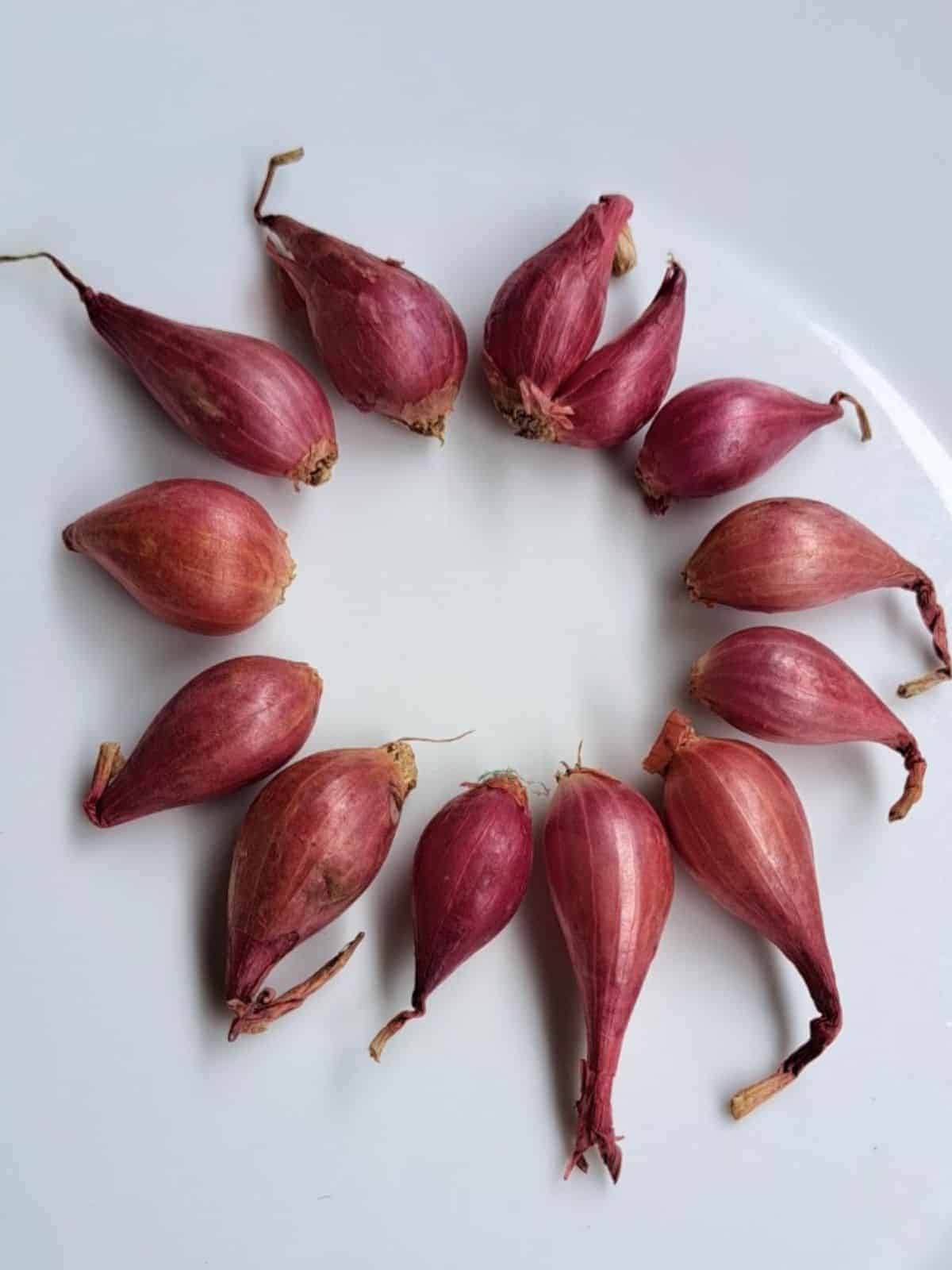
Shallots (hành tím) and garlic form a close-knit couple in Vietnamese cuisine, often used together in cooking, especially for marinades. In some cases, one can be a substitute for the other.
Similar to tỏi, hành tím finds its way into nearly every Vietnamese dish. It’s a must-have for popular dishes like:
- Thịt kho: braised pork & eggs
- Cá kho: caramelized fish
- Thịt nướng: grilled pork
Vietnamese cooks also recommend using shallot juice instead of minced shallots for marinades.
Hành phi (Fried shallots) is popular as a topping for many dishes such as:
- Phở trộn: phở noodle salad
- Xôi xéo: sticky rice with hand-cut mung bean paste
- Bánh đúc nóng: savory rice puding
- Bánh tráng trộn: rice paper salad
23. Tỏi Tây / Hành Boaro (Leeks)

Leeks are considered a herb from the West, which is why Vietnamese refer to them as “tỏi tây” (Western garlic) or “hành boaro” (derived from the French word “poireau”).
Leeks are commonly used as substitutes for garlic, green onions, and shallots in vegan/vegetarian dishes. This practice is prevalent among many Vietnamese who follow Buddhism and avoid consuming these particular vegetables.
24. Củ Nén/Hành Tăm (Pearl Onions)
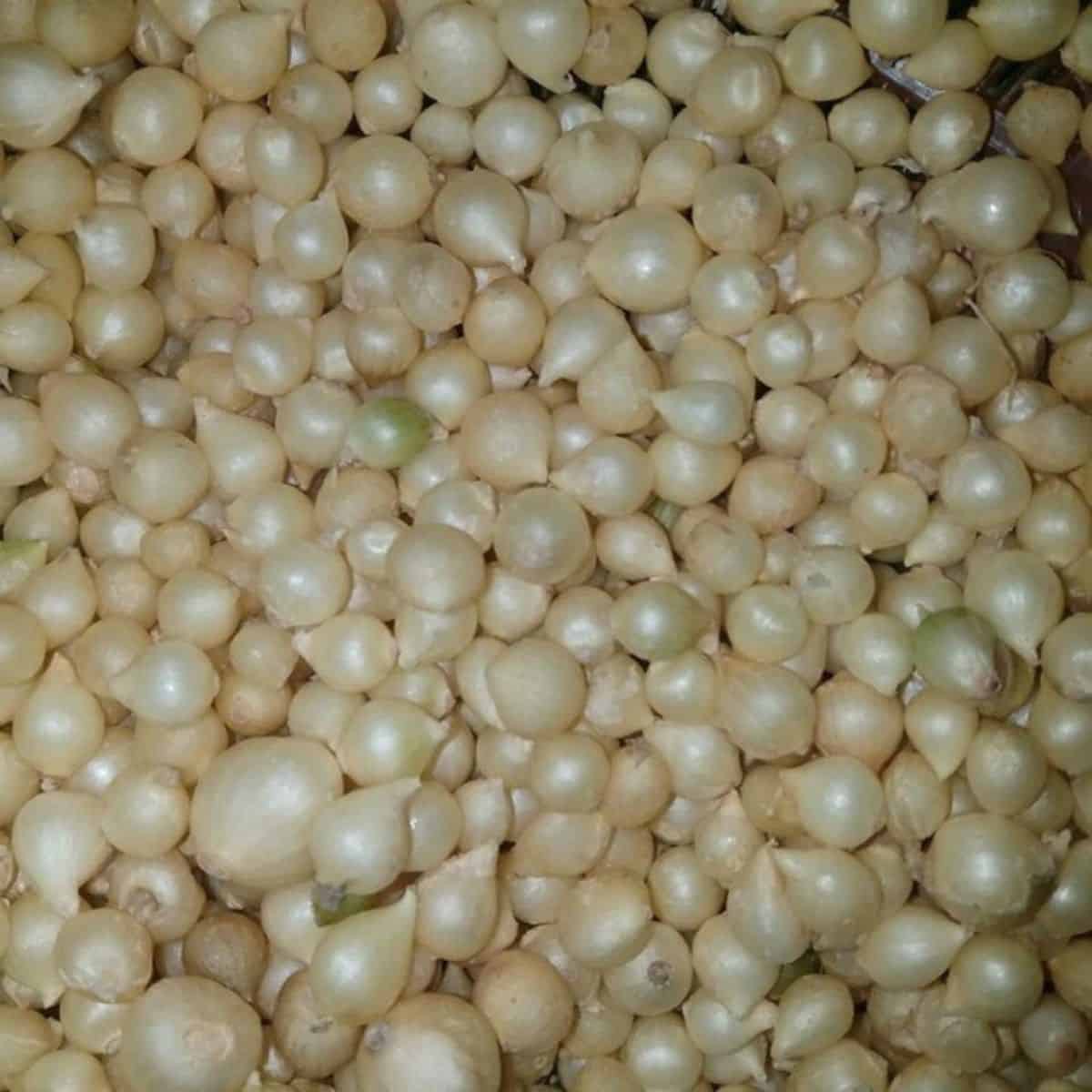
Củ nén is a specialty herb from Quảng Nam and Đà Nẵng provinces. Its flavor is a blend of shallots, garlic, and garlic chives but with milder spices and a stronger fragrance.
In Vietnam, Mì Quảng (Quảng-style yellow noodles) is not complete without củ nén, but when living abroad, I have to substitute it with pearl onions or even shallots.
25. Gừng (Ginger)

Ginger (gừng) has been a popular remedy in many countries. Vietnamese people use ginger extensively in cooking (just after garlic, green onion, and shallots).
We use it to make braised dishes (Vietnamese caramel ginger chicken), steamed dishes (steamed whole fish), stir-fries (pork & ginger stir-fry), and dipping sauces (Vietnamese ginger fish sauce).
Ginger is also a magical ingredient for removing the odor of meat and seafood.
Considered a ‘Yang’ element with a hot nature, ginger helps balance out ingredients with a ‘Yin’ or cold element in our cooking philosophy. It is often paired with lemongrass to enhance the fragrance of various dishes.
In addition to savory dishes, we use ginger to make sweet treats and drinks, such as mứt gừng (candied ginger) or trà gừng (ginger tea).
Recipes with ginger:

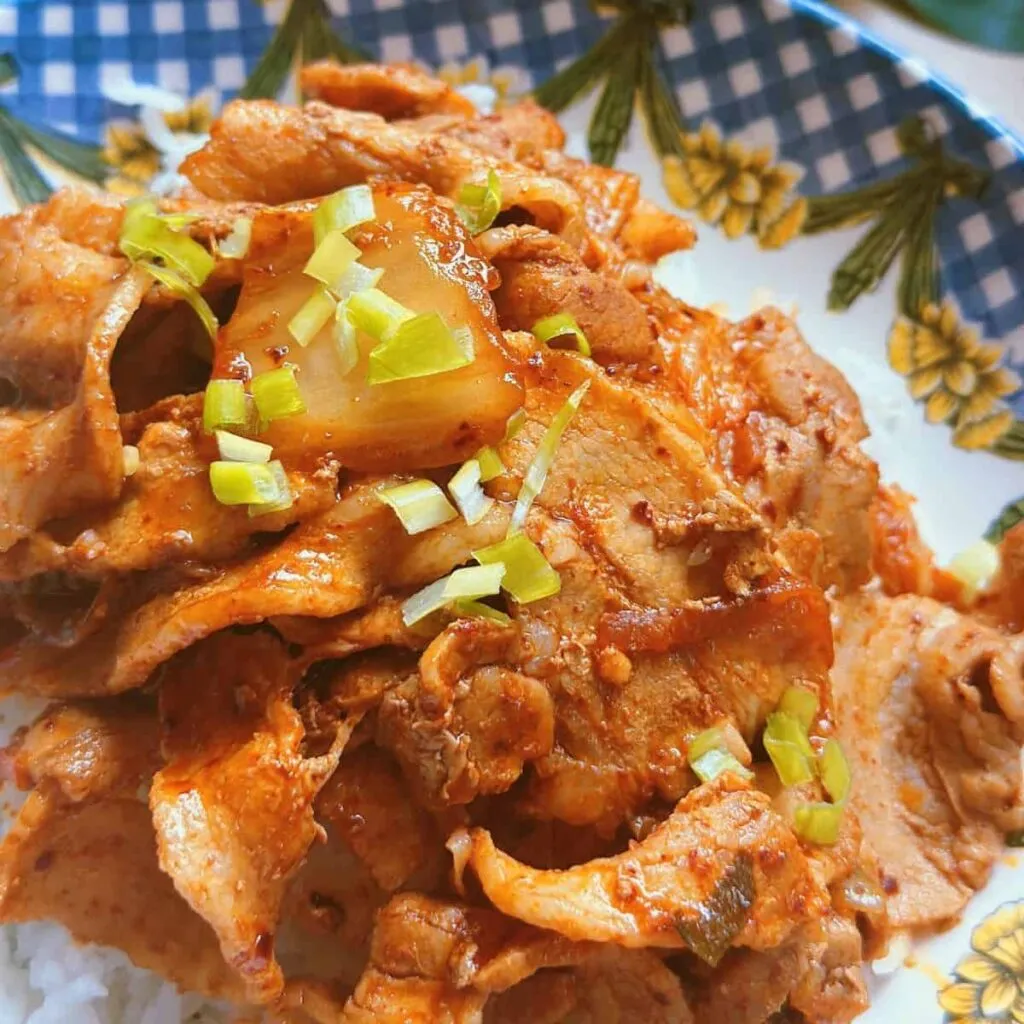

26. Nghệ (Turmeric)

Similar to dill, turmeric (nghệ) is an irreplaceable ingredient in Hanoi’s famous delicacy: chả cá Lã Vọng (turmeric fish with dill).
It’s also a popular ingredient in the central region in dishes like cá kho nghệ (braised fish with turmeric) or gà kho nghệ (braised chicken with turmeric).
In Vietnam, turmeric is used both fresh and powdered. Beyond its flavor and fragrance, we Vietnamese often use turmeric to impart a vibrant yellow color to food like:
- Cơm Gà Hội An: Hoian Chicken Rice
- Bánh Xèo Waffle
27. Riềng (Galangal)

Less popular than its brother, ginger, galangal (riềng) is much popular in Northern cuisine.
Northern Vietnamese love to infuse a touch of galangal into their daily recipes such as:
- Cá kho riềng: caramelized fish with galangal
- Thịt nướng riềng: galangal grilled pork
Yet, the most iconic dish of the Red River Delta is chân giò nấu giả cầy (braised pork knuckles with galangal and fermented shrimp paste).
28. Ớt (Chili)

Chili (ớt) is particularly popular in the central cuisine especially in Huế. The food here is often boldly seasoned and accompanied by chilies. Some local people there even enjoy going solo with raw Thai bird’s eye chili and a simple bowl of steamed rice.
Down South, the love for spiciness remains, just with a tad less intensity. Northern cuisine leans towards a milder and more balanced flavor, which is friendlier to most people.
In Vietnam, we love both Thai bird’s eye chili for its fiery kick and goat’s horn chili, for its vibrant red color.
Apart from Thai bird’s eye chili and goat’s horn chili, we’re vibing with Thai green Chili. It’s pint-sized, not too spicy, but oh-so fragrant.

Chilies are used in different forms such as fresh, dried, chili oil, or chili sauce.
While Sriracha from Huy Phong is a popular chili sauce abroad, in Vietnam, brands like Chinsu and Cholimex are famous for their chili sauces. Chili sauce could be a nice food souvenir for your trip to Vietnam.
Vietnamese chili oil (sốt sa tế) , unlike Chinese chili oil, is made with chili and lemongrass. It’s a versatile condiment for stir-fries and marinades.
Some Vietnamese and Asian recipes using chilies in my blog:
- Chili oil eggs: It only takes 5 minutes to cook and is perfect with any noodles, such as Lao Gan Ma noodles and rice paper noodles.
- Phở Sa Tế: the spicy beef satay Pho.
29. Lá Chanh (Lime Leaves)

Lime leaves (lá chanh) are an irreplaceable companion to chicken in Northern cuisine.
You can find lime leaves in many Vietnamese chicken dishes like:
- Phở gà: chicken phở
- Gà kho: caramelized chicken
- Gà luộc: Vietnamese boiled chicken
Moreover, lime leaves are an ingredient in some Vietnamese dipping sauces like muối tiêu chanh (lime & pepper salt dipping sauce).
If you don’t have lime leaves, you can substitute them with kaffir leaves if you have them on hand.
30. Lá Chúc (Kaffir Leaves/Makrut Lime Leaves)

In Vietnam, makrut lime leaves/kaffir leaves (lá chúc) are not a very familiar ingredient; they are only somewhat popular in An Giang, a province bordering Cambodia.
People here often use them as a substitute for lime leaves.
Save or pin this fantastic guide so you always know where to find it.
If you have any questions about Vietnamese herbs, whether it’s identifying them or understanding how to use them, feel free to ask—I’m more than happy to help you :).

